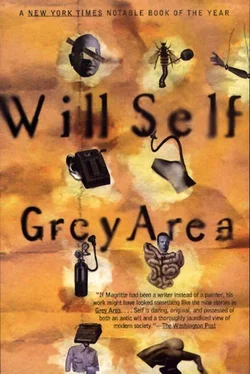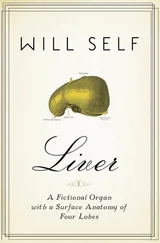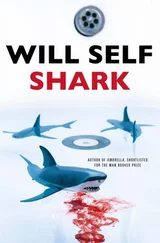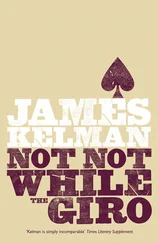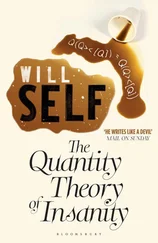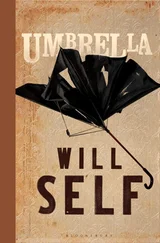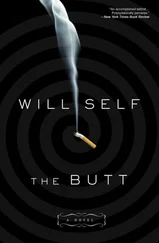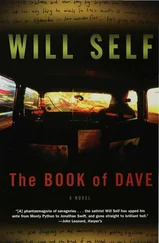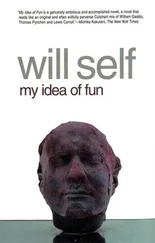The day my last period was due was marked in red. This is how my life resolves itself: into periods and the periods between periods.
But when I thought about it, summoned up the seven-fifteens of those last forty days, they returned to me decked in the same limpid, void garb as this morning. Could it be true? Could it be that it has been getting light at the same time for over a month now? It made no sense. This is the time of year when the seasons change rapidly, when we become aware of the world turning despite — and not because — of what we do. And yet there was this six-week period during which nothing had changed.
I dressed carefully. I tucked the sanitary towel into the gusset of my underpants, trying hard not to think of it as some magical act, some willing of the jammed wheel of my cycle. I selected a new pair of tights from the drawer, and unsnapped them from their cellophane confines. I put on my bra and a cream-coloured cotton blouse. I took a fawn, two-piece suit from the wardrobe. Stepping into the skirt I caught sight of myself in the mirror on the wardrobe door. It was only momentary, but looking at the slight, sharp-faced young woman I saw reflected there, I realised that while I was by no means indifferent to her, she was moving inexorably towards the periphery of my acquaintance.
When I was fully dressed I sat at my bureau and applied a little eyeliner and a smudge of foundation. I don’t wear lipstick as a rule. I knew that my boss would ask me to attend the inter-departmental meeting with him today, so that I could take minutes. Although he would never actually say anything to me about my appearance, I am conscious of the fact that he approves of the way I always make sure I am scrupulously neat, if we are in any context where we are representing the Department to the rest of the Company.
In the kitchen I examined the wash of pale light that fell across the draining board. Was it at precisely the same angle as yesterday? It seemed so. And my bath, gurgling away in a froth of bubbles and white water outside the kitchen window. Was it frothing in exactly the way that it did yesterday? Or was it only my perception of it? They certainly seemed familiar, those miniature cumuli, sparkling oily greens and blues.
In the middle of the afternoon, I found myself by the facsimile machine again. I was looking out through the vertical textured fabric louvres and trying to decide whether or not the sky was the same colour as at this time yesterday. How would it be possible to do this? I toyed idly with getting a colour chart from the local DIY shop and seeing if I could match the sky’s shade to any of its little squares. But the minute I hit upon this idea, I realised that it was absurd, that the sky wasn’t like some expanse of silk emulsion on which I could impose my taste.
Then I became aware of his presence again. It was much stronger today. I turned, but he wasn’t behind me; all I could see was an ear, poking around the jamb of the door. Its owner must have been talking to someone in the office to the immediate left of the recess where the inter-departmental facsimile machine is housed. I knew it was his ear intuitively. It was a thick, blunt ear, the edges folded over, squaring it off at the top and the side. I began to feel queasy looking at it. It was a typical ear — an ear that revealed what you always have suspected about ears, namely that they don’t possess nerves connecting them to any organ capable of apprehending their shape. I couldn’t believe that this ear was made from flesh and not some more ductile substance, like wax or putty, that had been moulded and then set.
Involuntarily I clutched at my own ear and kneaded it between my thumb and forefinger. I was jerked out of this nauseating brown study by the insistent peep of the facsimile machine — I had neglected to feed it with the next sheet and the connection was broken. By the time I redialled, fed the oblong maw, then turned to look once more, the ear had gone.
We were hosting the inter-departmental meeting this month. My boss always chooses to hold this in Conference Room 2. I have a suspicion that this is because he wishes to intimidate his fellow heads of department. Conference Room 1 is both more comfortable and more accessible.
Conference Room 2 is at the far end of the Department, further up the flight of stairs, past my office. It is perched on top of a wing of the building that projects out into a medium-sized abyss. Four storeys below the grimy windows of the room, a tangled collection of roofs, aerials, walls and skylights provides no fixed point for the eye to alight on.
Although the horizon is no further than before, the sense of Conference Room 2 being surrounded on three sides by space, and accessible on the fourth only by a dwarf entrance from the main building, makes it cut off and removed. This is heightened by the spectacle of a Portakabin that abuts the Conference Room, the end of which dangles over the edge of the local void.
The short flight of stairs that connects Conference Room 2 to the rest of the building has the ubiquitous corporate trappings: half-conical sconces on the uplights; the feral-animal-strength carpet tiling; the vertical textured-fabric louvres (proportionately tiny — to fit the tiny windows).
I entered Conference Room 2. The heads of department sat around the conference table, a blond wood lozenge. Each one was positioned in front of a representation of the corporate logo attached to the wall: an elephant (Indian), standing on a globe, but so stylised that it’s difficult to tell if that’s what it really is.
Southam was there, from marketing; Haines from purchasing; Thribble from sourcing; Andersen from accounting; Askey from data processing; Tenniel from personnel, and, of course, my boss, representing the Department.
‘Come and sit here.’ He clutched a bunch of his black hair in one hand. He was wearing one of those shirts where the collar and cuffs are white, while the rest is striped. This highlighted his brown hands and browner face, making him appear like some executive minstrel. The presentation document was open on the table in front of him, and I could see that he had been making notes in the margin. I got my dictaphone and notebook out and readied myself to take the minutes.
‘Gentlemen,’ my boss began, leaning forward in his chair, ‘as you may recall, last month when it was the turn of my department to host this meeting, I made some proposals regarding the final phase of our corporate restructuring. Since then, as you are all no doubt aware, we have had the Main Board’s approval to proceed with their implementation.
‘This month I have requested a report from each of you, as to how far you have proceeded with the programme. I’ll ask you, Terry, to begin — if you don’t mind?’
‘Not at all,’ said Southam, shifting forward in his seat so that he could pour himself a cup of coffee from the stainless-steel vacuum jug and I could see the puce skin of his tonsure. ‘I am happy to be able to report that since last month a further 37 per cent of our allocated spend has been redirected towards internal marketing. This means that as of today a total of’ — he consulted his own presentation document — ‘97 per cent of our budget is now dedicated to the internal market.’
There were a number of nods, and significant grunts, from the other heads of department. Southam went on to explain the new marketing plan his department had developed to cope with the changed situation. I took the minutes diligently, listening to what he was saying, but not troubling to comprehend it.
When he had finished speaking my boss turned to Haines from purchasing. Haines’s arms were crossed and with the inside edge of each middle finger he was methodically rubbing the nap of suiting stretched over either elbow. He spoke quietly and expressionlessly, with his eyes fixed on the corporate logo opposite him.
Читать дальше
